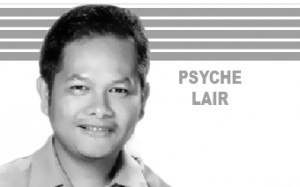One of the tools that a psychiatrist or psychologist uses to detect mental illness is the mental status examination (MSE). Generally, it is a structured way of observing and describing a client’s current state of mind under the domains of appearance, attitude, behavior, mood and affect, speech, thought process, thought content, perception, cognition, insight and judgment.
A clinician does MSE systematically based on the client’s behavior while he or she is in the clinician’s view during the interview. Any evidence of symptoms and signs of mental disorders are noted including danger to self and others. Furthermore, information on the client’s insight and judgment is also taken into account to inform clinicians as to the appropriate treatment strategy.
While clinicians do this inside the clinic or interview room with greater accuracy, we can all learn a thing or two on what to look into using the MSE to detect symptoms and make referrals.
Let us begin with appearance. Colorful or bizarre clothing might suggest mania while unkempt, dirty clothes can be an indicator of schizophrenia or depression. If a person looks older than his age, this can suggest ill-health or poor self care. Odor of the person can indicate poor personal hygiene due to neglect or alcohol intoxication. Weight loss, on the other hand, could indicate anorexia nervosa, depression, or anxiety.
Next is attitude or rapport. Is the person cooperative? Or is he hostile, guarded, suspicious, or regressed? Generally, rapport refers to how the person responds to you during your encounter.
We also look into behavior. This domain refers to the person’s specific abnormal movements and generally his level of activity and arousal. Is the person’s activity level more intense than normal (hyperactivity)? Or is there a noted slowing down of activity level (psychomotor retardation)? What about the person’s eye movements and eye contact? Repeatedly glancing to one side can suggest hallucinations or lack of eye contact may indicate depression or autism.
What about the person’s mood and affect? Mood refers to one’s subjective feelings but when these feelings are outwardly manifested, it is now referred to as affect. Hence, we can only ascertain a person’s mood by asking her what she feels. So, a person may be feeling neutral, happy, sad, angry, anxious, or apathetic.
Now, what about the emotion that is conveyed by the person through her nonverbal behaviors? Is it appropriate or inappropriate to the situation? A person who laughs in a sad situation is showing inappropriate affect. What about the intensity? Prolonged sadness and crying may indicate depression. Congruence? A person describing a very distressing experience but has a bland affect may have schizophrenia.
We include as well in our observations the person’s speech and content of speech. Is it fast or slow? Rapid speech may indicate mania. Does the person tend to repeat words or echo them? And what about the content of the speech? Are there noted jumping from one thought to another? Or perhaps there is poverty of thought, always going back to the same limited set of ideas? Or maybe there is thought interruption and blocking which is characteristic of people with schizophrenia.
Related to the thought process which is inferred through the person’s speech is his thought content. Abnormalities of thought content may be manifested in delusions, overvalued ideas, obsessions, phobias, and the like. A person who is delusional has a deeply entrenched belief which is false. For instance, a person may believe that he is the Christ and he has healing powers. An obsession is an intrusive thought that cannot be suppressed by the client and causes significant distress and compulsions to act out the thought.
Perception is how we interpret the world. Sometimes, we mistakenly perceive something, as in the case of illusions that are regularly done by magicians. But a false perception may involve hearing voices, seeing things, feeling something on the skin, or smelling odors which are non-existent. In this case, these are already hallucinations and indicative of a psychotic disorder.
Lastly, we can look into the person’s level of insight and judgment. Is the person aware of his problems and is he able to explain the circumstances surrounding this problem? Relative to this, does the person have the capacity to make sound, reasoned and responsible decisions?
To the untrained eye, this may look like too much to consider as relevant. But let us always remember that we do not need to make minute scrutiny and collect a lot of data to make a referral. Even a single symptom may be reason enough to ask for a second opinion from a mental health professional. It is better to err on the side of prevention than do everything to heal something that may be too late to cure.
P.S. 1 For appointments, please call or text 416-1248. You can also email me at kitbalane@boholchild.com for your comments and inquiries.

